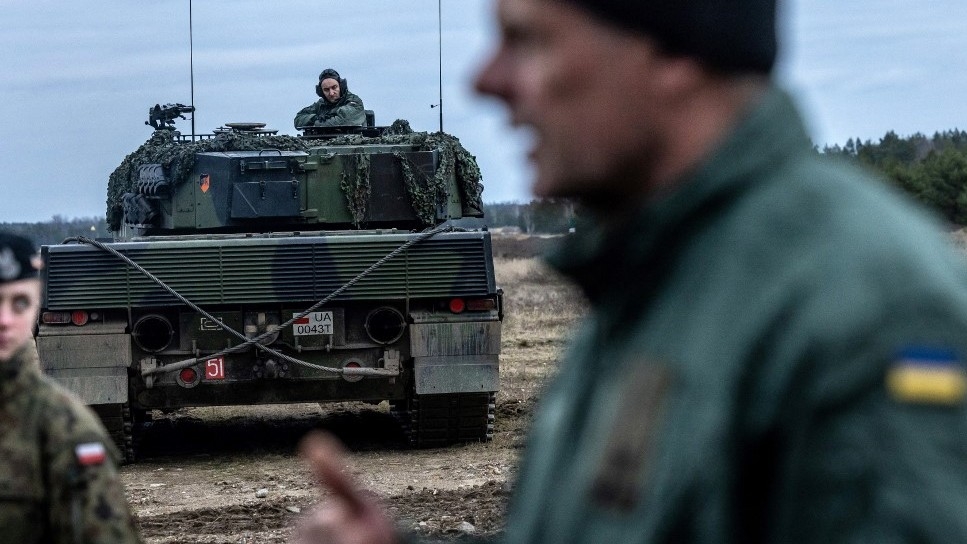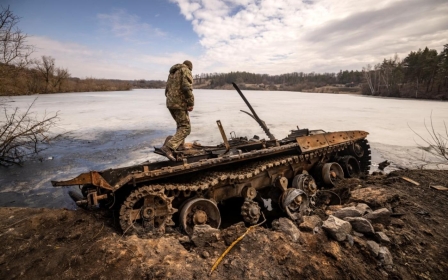Russia-Ukraine war: Will western tanks end the war?

The tank is not dead, despite what Elon Musk has said (not that any student of warfare should pay attention). So far, no alternative category of weapon systems can provide similar levels of mobility, firepower and protection - the historic triad of warfare. This is despite the colossal costs and logistical nightmares of tank warfare.
In Ukraine, tanks and other armoured vehicles have been critical in all four phases of Russian President Vladimir Putin’s war of aggression. They are likely to remain so in future phases. But this war will have to end eventually. Will western tanks contribute to expediting the end?
Armoured formations, including tanks and mechanised infantry, are certain to lead these ground offensives and counteroffensives
In February 2022, Russian armoured formations broke through Ukrainian defences in a number of areas, partly due to significant mass and sustained firepower. By April - the end of the first phase of this war - Ukraine had liberated four northern provinces (Zhytomyr, Kyiv, Chernihiv and Sumy), as well as parts of occupied Kharkiv. The “coalition of NLAWs and Javelins” that Ukrainian President Volodymyr Zelensky hailed during his emotional speech at Westminster Hall was partly responsible.
Tanks were critical to Ukraine’s defence-in-depth strategy. The 1st Tank Brigade (known as the Severia Brigade in Ukraine) heroically resisted Russian armoured units while being outnumbered by around 10 to one.
The Severia Brigade not only repelled the invasion attempt in Chernihiv city, but also undermined the Russian advance towards Kyiv from the northeastern vector. Ukrainian resistance in the northeast rendered Russia’s elite 1st Guards Tank Army bordering on combat ineffectiveness, and degraded the threats posed by Russia’s Western Military District to smaller Nato countries in Eastern Europe.
New MEE newsletter: Jerusalem Dispatch
Sign up to get the latest insights and analysis on Israel-Palestine, alongside Turkey Unpacked and other MEE newsletters
The damage to Putin’s forces in the battles of Chernihiv, Sumy and Kharkiv provinces was inflicted - in part - by Ukrainian-upgraded, Soviet-era T-64B and T-64BM “Bulat” battle tanks, which, although effective, are still inferior to western tanks.
Stunning counteroffensives
The second phase of the war in summer 2022 was dominated by artillery duels in the Donbas and relatively limited manoeuvre and armoured warfare. But an armoured breakthrough in Toshkivka led to the fall of Lysychansk to Russian-backed forces, followed by the fall of Luhansk province in July. Luhansk was the only province to (temporarily) fall entirely under Russian occupation since the fall of Crimea in 2014.
The third phase in autumn 2022 featured a series of stunning Ukrainian counteroffensives, liberating most of Kharkiv province as well as Kherson city, the only provincial capital captured by Russia during the war. It seemed as if Ukraine was undoing Putin’s occupation.
But then it gets complicated.
Whereas the liberation of Kherson city highlighted the critical role of western-guided artillery systems, such as the High Mobility Artillery Rocket Systems (the M142 Himars), the Kharkiv counteroffensive showed the critical need for infantry fighting vehicles (IFVs) and tanks, as well as air cover and support. Hence, the eloquent appeal of Zelensky to Westminster: “We have freedom, give us wings to protect it.”
In Kharkiv, Ukraine’s brigades went into their counteroffensive manoeuvre last September under-armoured, partly using wheeled civilian 4x4s SUVs and pickup trucks with makeshift armour. They successfully employed a hybrid armoured force in spectacular thunder runs (deep manoeuvres into Russian-occupied territory as a means of destabilisation).
The success was limited, though. Lacking proper armour and sufficient ammunition, in addition to manpower and airpower, Ukraine’s armed units could not fully exploit the rout and liberate all of Kharkiv province, nor several relatively vulnerable positions in northern Luhansk province. Since October, Ukraine’s counteroffensive has stalled in occupied Luhansk.
To make it worse for Ukraine, the fourth phase of the war (winter 2022-23) has featured a brutal Russian air campaign that has caused significant damage to Ukraine’s civilian infrastructure. This was coupled with a Russian advance (and limited retreats) in the western Donbas, which, given the massing and mobilisation of forces, is likely to be the site of significant future combat operations.
Strategic victory
Armoured formations, including tanks and mechanised infantry, are certain to lead these ground offensives and counteroffensives. Ukrainian officials have confirmed that at least 321 battle tanks will be delivered to Ukraine, within the range requested by Ukraine’s army chief, General Valeriy Zaluzhny. Approximately, this is equivalent to an armoured division-sized formation.
All three types of promised western tanks - British Challengers, American Abrams and German Leopards - are larger than the Russian tanks visually confirmed to be operating in Ukraine. Compared to the most common model of Russian tanks in Ukraine (the T-72 and all of its versions), all three models of western tanks have longer firing ranges, more accurate mobile-firing capability, more rapid rate of fire, better sighting systems, stronger armours and, generally, more agility in manoeuvring.
Yet tanks don’t fight on their own, and they don’t fight alone. To contribute to a strategic victory liberating Ukraine’s territories, or to a series of operational successes that force Putin to end the aggression, a number of factors will be crucial, including delivery timings, training of tank crews, and preparation and sustainment of logistical supply lines and maintenance systems.
Tanks are commonly used near contact lines with the enemy, increasing the likelihood for breakdowns, damage, partial destruction and attrition.
Ukraine had a previous experience with the German self-propelled heavy artillery system, the Panzerhaubitze 2000; after firing around 300 shells a day, the otherwise great artillery systems broke down and needed maintenance and spare parts. Tanks are likely to experience similar issues: they will be closer to enemy fire than the less armoured and longer-range, self-propelled artillery.
So, will western tanks end this war of aggression? Well, not on their own - but they can certainly contribute to ending it, with the above-mentioned contingencies. The Abrams faced the T-72s (the most common model/version of Russian tanks on Ukrainian territories) in large tank-on-tank formations in February 1991 during the famous battle of 73 Easting in Iraq.
The outnumbered Abrams (and Bradley IFVs) outclassed the T-72s’ larger formations by many, many levels. That was due to better-trained tank crews, longer firing ranges, manoeuvrability, better sighting and accurate firing capabilities while moving, and - on the other end - poor training, logistics and maintenance.
Yet wars and battles have similarities as much as they have differences. This war is no exception. While the tanks are certainly needed, they likely won’t be sufficient to end the Russian aggression against Ukraine.
The views expressed in this article belong to the author and do not necessarily reflect the editorial policy of Middle East Eye.
Middle East Eye delivers independent and unrivalled coverage and analysis of the Middle East, North Africa and beyond. To learn more about republishing this content and the associated fees, please fill out this form. More about MEE can be found here.







